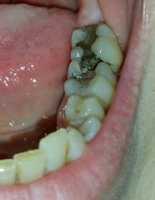Author Interviews, Mental Health Research / 25.02.2020
Machine Learning Allows Empathy To Be Predicted in Resting Brain
MedicalResearch.com Interview with:
Leonardo Christov-Moore, Ph.D.
Postdoctoral Scholar
Brain and Creativity Institute
University of Southern California
MedicalResearch.com: What is the background for this study?
Response: We've known for some time that empathy has both bottom-up, affective, somatomotor components, that let us quickly feel and internally simulate other peoples' internal states, and more cognitive, top-down components through which we make conscious inferences about others' beliefs, intentions and internal states. And there is interesting work suggesting that in many cases, these components work together. In our work, we took this idea further to propose that they exist in constant interaction, with the bottom-up systems providing information that informs the top-down processes (aiding in our inference), which in turn provide modulation and control to the bottom-up processes (modulating the extent to which we "resonate" with others based on context, affiliation, etc.).
Specifically, we found that you could predict many aspects of prosocial decision-making ( a top-down task) from bottom-up and top-down systems' interaction during simple bottom-up empathy tasks (passively observing someone experience emotion or pain). This led us to hypothesize that peoples' levels of empathic concern for others are dictated by stable patterns of interaction between these systems.
In the current study, we made a strong test of this hypothesis: if these empathy-predicting patterns of interaction are stable across task demands, we should be able to observe them (and predict empathic concern from them) even when the brain is not doing anything ostensibly related to empathy! So that's what we did. (more…)




























